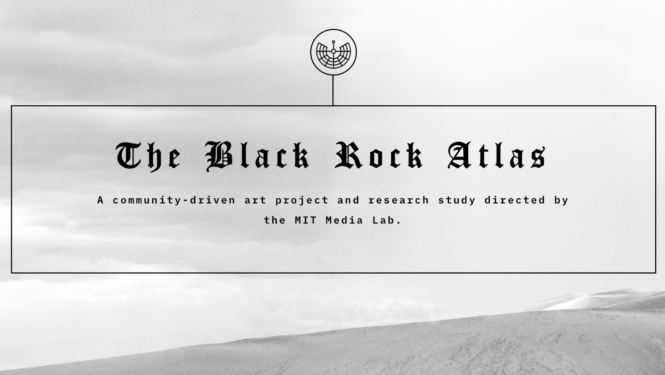The Black Rock Atlas Project wants your help in understanding Burning Man’s whimsical and serendipitous networks. Following on their 2018 study, these MIT Media Lab researchers are back in 2022 to further understand how communities connect to one another in the Burning Man ecosystem. Read all about it below. If you’re playa-bound in 2022, you can register to participate here!
Contemporary times have seen our forms of social organization stultify and stagnate. While our ancestors once lived in societies that possessed highly diverse governance structures, habitats and social schemas, many of us have mostly settled on hierarchical, profit-maximizing forms of government and urban structure.
However, there still remain hotly imaginative pockets that are rewriting the story of how humans organize themselves. One superb example is the chaotic ecosystem of Black Rock City. Rather than a monolithic continent, Black Rock City is an archipelago, constituted by hundreds or thousands of distinct islands with their own local cultures and vibes: from cat universities and kinky circuses to camps focusing on food, mutant vehicles, dance parties, bike culture, and everything in between.
Yet in the midst of such chaos and anarchy, it can be surprising that anything ever gets done. How can this complex assemblage give rise to the coordination necessary to put Burning Man on?
As a team of MIT researchers studying collective intelligence, citizen science and social networks, we have set out to investigate this.
In 2018 during the iRobot Burn, we conducted a “small world” experiment to map the social networks of Black Rock City. Riffing off of the notion of “six degrees of separation” popularized by Stanley Milgram in the 1960s, we constructed vessels from poster tubes, disposable cameras and GPS trackers, each containing the name and information of a citizen of Black Rock City. We then sent these vessels off into the dust to see how they would travel across the webs of human connection.
What we found was shocking. Much to our disappointment, none of the vessels made their way back to us during the Burn; they seem to have utterly disappeared into the desert. Yet surprisingly, two vessels emerged during Decompression events with four and six hops respectively! It seems that not only is Decompression a key emotional experience for adjusting back to default life, but also a key social experience that solidifies and nurtures the social webs from Black Rock City.
These results from our experiment have important implications for how we think about Burning Man relative to the default world, and how Burning Man functions. In contrast to the default world, where networks are designed for efficiency, growth and optimal routing, our results suggest that the networks of Burning Man champion cooperative effort and whimsical creativity over efficiency. This fosters a unique context where serendipity is the rule, not the exception. We believe this type of social dynamic may hold the key to how the experiment of Burning Man is able to persist and thrive.
But our previous experiment was just the first step in understanding this phenomenon.
This is where you come in. In collaboration with Burning Man Project, our team is back at it again, this time at a bigger scale. To further understand what makes the magic of Burning Man happen, we are extending the Black Rock Atlas to map larger swathes of the Burning Man ecosystem. To do this, we are routing hundreds of vessels through Black Rock City and logging their route through the City’s social networks.
The Atlas needs committed collaborators to ensure the vessels reach their ultimate destinations. If you are curious, inspired, or just generally interested in helping out, please fill out this form (with the code EPL) and we will reach out shortly.
Through active participation, reflection and experimentation, we believe the citizens of Black Rock City can help make our community even better, and transmit some of the playa wisdom and magic back to the stultified world beyond. We hope you will join us on this quest.
(Cover image courtesy of BRAT)


I was one of the two folx that got the vessels back to MIT, it was a really neat experience :) So glad to see the experiment returning this year! Go sign up for this!
Report comment
Overheard in an MIT dorm room circa 2017 “Dude, how do we get MIT to pay for our trip to Burning Man?”
Answer: Duh.
Report comment
Comments are closed.